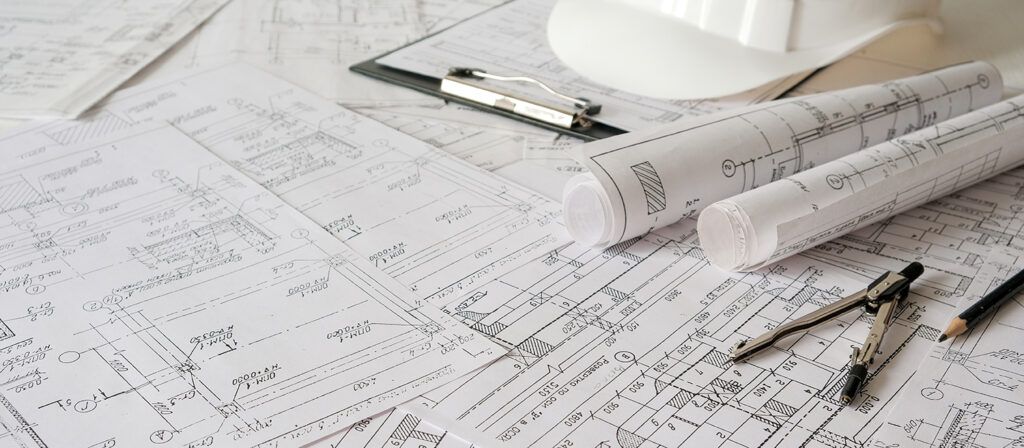The Retrofit Advantage – Modernizing Existing Buildings with Building Automation

When it comes to upgrading the systems in a commercial or industrial facility, building owners and managers face a key decision – pursuing a complete overhaul through new construction or retrofitting the existing structure. While new builds offer a clean slate, the retrofit approach provides significant advantages that are worth exploring, especially when leveraging modern building automation systems (BAS).
The Benefits of Building Retrofits
COST SAVINGS
One of the primary drivers for retrofitting is the considerable cost savings compared to new construction. A retrofit allows you to preserve the existing structure, avoiding the substantial expenses of demolition and rebuilding from the ground up. According to industry estimates, retrofitting can cost 30-50% less than new construction for a similar level of modernization. These savings can be reinvested into implementing advanced building systems and technologies.
MINIMIZED DISRUPTION
In many cases, businesses and operations need to continue functioning throughout the upgrade process. Retrofitting enables a phased approach, minimizing costly downtime and disruptions to day-to-day activities. With careful planning and execution, retrofits can be carried out zone by zone or floor by floor, allowing sections of the facility to remain operational while others are under construction.
SUSTAINABILITY
By reusing and upgrading the existing infrastructure, retrofitting aligns with principles of sustainable development and environmental stewardship. It reduces the consumption of raw materials needed for new builds, minimizes construction waste sent to landfills, and leverages the embodied energy already invested in the original structure. This approach helps lower the overall carbon footprint of the project while ensuring compliance with green building standards and potential eligibility for incentives or certifications like LEED.
ACCELERATED TIMELINES
Retrofitting typically involves a shorter project timeline compared to ground-up new construction. With the core structure already in place, the process can progress more quickly through key phases like design, permitting, and installation of new systems. Contractors can also take advantage of unoccupied spaces or off-hours to accelerate specific tasks with minimal disruptions. This accelerated pace translates into faster returns on investment and a reduced period of transitional inefficiencies for building occupants.
PRESERVING HISTORIC CHARACTER
For buildings with historical significance, architectural merit, or cultural value, retrofitting may be the only viable option to retain the cherished aesthetics while modernizing critical systems. Sensitive upgrades and system integrations can breathe new life into aging structures while respecting their heritage and preserving the qualities that make them unique assets to the community.

The Role of Building Automation in Retrofits
LIGHTING AUTOMATION FOR ENERGY EFFICIENCY AND COMFORT
Modernizing a building’s lighting system is a common priority in many retrofit projects. Legacy lighting technologies like incandescent and fluorescent lamps are inefficient, contributing to excessive energy costs and greenhouse gas emissions. By integrating lighting automation systems as part of a smart building automation system (BAS), facilities can transition to high-efficiency LED lighting while adding intelligent controls and optimization.
Lighting automation allows for granular management of illumination levels based on dynamic factors like occupancy patterns, daylighting conditions, and usage schedules. Occupancy and vacancy sensors ensure lights are dimmed or turned off in unoccupied areas, while daylight harvesting strategies adjust artificial lighting intensity to complement the available natural light. Scheduled dimming and tunable white lighting customize illumination levels for different times of day or specific tasks.
These capabilities drive substantial energy savings of 30-60% compared to traditional lighting systems. The reduced energy demand also lowers the building’s carbon footprint and operating costs. Additionally, lighting automation enhances occupant comfort, productivity, and well-being by creating optimal lighting conditions throughout the day. Circadian lighting that mimics natural light patterns has been shown to improve sleep quality, boost alertness, and provide health benefits.
FIRE AND LIFE SAFETY AUTOMATION
Ensuring the safety of occupants is a paramount priority, and retrofitting aging fire alarms, emergency communications, and life safety systems is a common need. Modern fire alarm control units and systems provide enhanced capabilities for early detection, notification, evacuation aid, and emergency control functions compared to legacy alternatives.
By tightly integrating fire and life safety systems into the larger building automation system, facilities gain centralized monitoring, control, and reporting over components like smoke and heat detectors, sprinklers, emergency lighting, evacuation signage, mass notification speakers, and automated systems for staged evacuation procedures. Real-time incident details, system status, and event logging streamline emergency response while simplifying regulatory compliance through detailed records.
The integrated BAS architecture allows for intelligent cross-system interactions and automation sequences during emergencies. Upon verified fire alarm activation, the BAS can initiate numerous simultaneous actions like shutting down HVAC systems to prevent smoke propagation, overriding access control systems for free egress, escalating notification to authorities, broadcasting audio instructions, and triggering other pre-programmed scenarios. These capabilities enhance overall safety while reducing response times.
HVAC OPTIMIZATION AND INDOOR ENVIRONMENTAL QUALITY
Retrofitting aging HVAC systems is often a priority, driven by demands for improved energy efficiency, enhanced occupant comfort, and better indoor air quality (IAQ). BAS platforms provide granular monitoring and control over all heating, ventilation, air conditioning equipment, chillers, boilers, air handling units, and terminal units. This enables advanced strategies like:
- Demand-controlled ventilation – Adjusting outdoor air intake levels based on real-time occupancy data instead of over-ventilating vacant spaces unnecessarily.
- Advanced scheduling and setbacks – Coordinating system scheduling with occupancy patterns to operate HVAC at reduced capacities during lower occupancy periods.
- Optimal start/stop – Analyzing factors like outdoor conditions and thermal mass to calculate when to initiate system start-up or shut down while still achieving setpoints by occupancy periods.
- Equipment sequencing – Efficiently orchestrating the staging and sequencing of multiple HVAC units, boilers, or chillers to match changing load conditions.
Furthermore, integrated control between HVAC and other systems like lighting enables continuous commissioning and optimization of the indoor environment. The BAS could automatically dim lighting zones with sufficient daylight to reduce solar heat gain and cooling loads in those areas.
ACCESS CONTROL AND SECURITY INTEGRATION
For many retrofits, upgrading access control, video surveillance, intrusion detection, and overall security systems is an essential component. Tying these systems into a unified BAS platform streamlines operations by eliminating inefficient siloed systems and interfaces.
Through the BAS, facility staff manage credentialing, monitor live and recorded video feeds, configure intrusion zones, and learn about breach events all within a single interface. Controlled system integrations enable coordinated actions, like triggering interior/exterior door lockdowns, prompting a security response, and capturing relevant camera footage upon a breach incident.
The BAS can also leverage occupancy analytics and usage patterns from integrated building systems to dynamically adjust security operations. Low occupancy areas can have reduced security focus while prioritizing monitoring for high-traffic zones. Machine learning algorithms analyze appearance and behavior data from video feeds to identify potential security risks.
DATA-DRIVEN INSIGHTS AND CONTINUOUS OPTIMIZATION
A core strength of modern BAS platforms is the extensive operational data gathered from the myriad integrated systems across the building. This data powers advanced analytics, fault detection, energy consumption analysis, and identifies potential areas for further optimization.
Key performance indicators derived from real-time data streams provide facilities teams with at-a-glance awareness of overall building health and performance across metrics like energy usage, equipment runtimes, space conditions, fault instances, and more. Interactive data visualization tools and customizable dashboards simplify the analysis of historical trends or deviations from baseline benchmarks.
This ongoing data collection also facilitates a transition from routine preventive maintenance to predictive maintenance practices. Component-level sensors, run-time counters, and machine learning models analyze operational patterns to forecast remaining asset lifespans and estimate likely failures before they occur. Avoiding disruptive downtime while maximizing asset utilization generates further cost savings and operational efficiencies.
The consolidated data repository within the BAS supports enterprise-level reporting and disclosure requirements related to energy, emissions, sustainability initiatives, and more. Analytics uncover opportunities to improve scores for industry benchmarks and rating programs.
IN CONCLUSION
As building owners and managers evaluate their options for modernizing aging commercial and industrial facilities, the retrofit approach emerges as a compelling choice, especially when paired with the capabilities of integrated building automation systems. Retrofits provide considerable cost savings over new construction while minimizing disruptions and aligning with sustainability principles.
By leveraging lighting automation, fire and life safety integration, HVAC optimization, security system consolidation, and data-driven analytics, modern BAS platforms breathe new life into existing structures. These capabilities enhance energy efficiency, occupant comfort, safety standards, and overall operational intelligence. The integrated architecture streamlines operations, reduces administrative overhead, and enables continuous monitoring and commissioning to ensure optimal performance over time.
While new construction allows starting fresh, thoughtfully executed retrofits offer a high-value path to transforming existing assets into intelligent, high-performance buildings positioned to meet the evolving demands of occupants, stakeholders, and a changing world. The rich insights provided by an integrated BAS ensure retrofitted buildings not only modernize but continuously improve and adapt for long-term success and relevance in the built environment.
